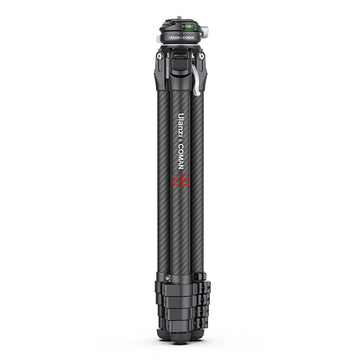Unlock Your Filmmaking Potential: The Ultimate Guide to Choosing the Perfect Phone Rig!
In an age where smartphones are becoming increasingly powerful tools for storytelling, independent filmmakers are harnessing their potential to create stunning visual narratives. The rise of smartphone filmmaking has democratized the art of video production, allowing anyone with a mobile device to capture cinematic moments. However, to truly elevate your film quality and production value, investing in a good phone rig is essential. A phone rig provides stability and enhances the overall shooting experience, making it easier to achieve professional-looking footage. As more creators venture into independent filmmaking, understanding how to choose the right phone rig becomes a crucial step in unlocking your filmmaking potential.

Understanding Phone Rigs and Their Benefits
A phone rig is essentially a support system designed to hold and stabilize a smartphone during filming. These rigs come equipped with various features that enhance the shooting experience. One of the primary benefits of using a phone rig is stability. Handheld shots can often be shaky, but a rig allows you to maintain a steady grip, resulting in smoother footage. Additionally, phone rigs can be equipped with various accessories, such as external microphones and lights, enabling filmmakers to create a more polished product. The versatility of these rigs allows for different shooting styles, whether you’re filming a documentary, a short film, or even a live event. By using a phone rig, independent filmmakers can achieve a level of professionalism that was once only accessible to those with high-end equipment.
Key Features to Look for in a Phone Rig
When selecting a phone rig, several essential features should be considered to ensure it meets your filmmaking needs. First and foremost, stability is crucial. Look for rigs that provide a solid grip and minimize vibrations. Weight is another important factor; a lightweight rig will be easier to handle during long shoots. Adjustability is also key—choose a rig that allows you to customize the height and angle for various shooting scenarios. Compatibility with accessories is another feature to weigh; ensure the rig can accommodate external microphones, lights, or even lenses. Some rigs also come with counterweights for added stability, which can be particularly beneficial during extended shooting periods. By focusing on these features, you can find a rig that caters to your specific requirements and enhances your filmmaking process.
Types of Phone Rigs Available
The market offers a variety of phone rigs, each designed for specific uses in filmmaking. Handheld rigs are popular for their portability and ease of use, making them perfect for dynamic shooting environments. Shoulder rigs, on the other hand, provide added support for longer shooting sessions and offer more stability when filming with larger accessories. Tripods are another option, ideal for stationary shots and interviews, allowing filmmakers to maintain a steady frame without the risk of hand fatigue. Some filmmakers prefer gimbals, which use motors to stabilize the camera, allowing for smooth motion shots. Choosing the right type of rig depends on your shooting style and the specific needs of each project. Understanding the strengths of each rig will help you make an informed decision that enhances your filmmaking capabilities.
Tips for Selecting the Right Phone Rig for Your Needs
Selecting the right phone rig involves evaluating your individual needs as a filmmaker. Start by considering your shooting style—are you primarily filming on the go, or do you prefer a more controlled environment? Next, assess your budget; while it’s tempting to invest in high-end rigs, there are plenty of affordable options that offer great value. Think about the types of projects you’ll be working on and what features will be most beneficial. For instance, if you’re shooting outdoors, a lightweight and portable rig may suit you best. Additionally, seek recommendations from fellow filmmakers or read reviews to gather insights on which rigs perform well in real-world scenarios. Taking the time to evaluate these aspects will ensure you choose a rig that complements your artistic vision and enhances your film production experience.
Essential Takeaways for Choosing Your Phone Rig
In conclusion, choosing the right phone rig is a vital step in unlocking your filmmaking potential. By understanding the benefits of phone rigs, recognizing key features, and exploring the different types available, you can make an informed decision that aligns with your creative needs. As independent filmmaking continues to grow, investing time in selecting a rig that complements your style will significantly enhance the quality of your work. Whether you’re just starting or looking to elevate your existing projects, a suitable phone rig can help you achieve your vision and tell your story in the most compelling way possible. Take the leap and explore the world of phone rigs—your filmmaking journey awaits!







